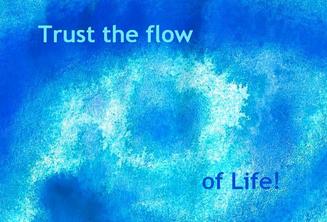
Intuition is usually understood to be a mental ability: it is defined as ‘comprehension without effort of reasoning’ (Webster’s), or as ‘immediate insight’ (Oxford English Dictionary). As such, it is associated with the receptive and symbolic mode of the right brain, as opposed to the logical, reasoning, thinking mode of the left brain. I have taught intuition in this neutral, mind-based way for over a decade. Looking at it like this is definitely useful, as it helps us understand how intuition functions by comparison with the ‘thinking’ mode that is most people’s way of using their minds. Once we get what the intuitive mode is like – essentially, knowing things without having thought about them – we’re able to identify it more easily and develop our use of it.
But recently, I’ve come to understand intuition more globally. I see how it is part of a way of being that is not dictated by survival and the need to figure out what to do and how to stay safe. Survival is ultimately driven by fear, and this activates the left brain, the endless rounds of thinking and doing based on that thinking. The tell-tale sign of this mode is that it is caught in thinking and is ultimately out of touch with reality. Perception is very narrow, limited by the concepts and thoughts that ‘run the machine’. The survival mode is stressful because the mind will never stop, nor will the need to do things ever end.

Intuition, by contrast, belongs to a way of being where we know we are part of a greater whole, and ultimately part of the unfolding of Life (Source, God, Love). We trust this unfolding, and we trust that we’ll come to know intuitively the things we need to know, as this knowing is part of what connects us to this greater flow: it gives us the pointers we need to direct our flow. There is no need to think very much in this mode. It’s easy and restful, even as we are busy doing things.
So how can we 'switch' to this mode? There are two main ways that complement each other.
1) We learn to notice when we are caught in survival mode, and we stop running in the hamster wheel of thought. This involves facing whatever fear drives us in trying to figure things out.
2) We learn to trust our intuition by actually putting it to the test. The more we do this, the more we will realize how reliable it actually is.
So over time we will be able to replace thinking and the fear that fuels it with trusting that knowing will come at the right moment and ultimately with trusting Life.
PS: If you'd like some support in learning to be more intuitive, there is an Intuition: Practice and Deepen workshop coming up in Montreal on Saturday, 24 May 2014. For more info go to the Intuition page, or CLICK HERE.
PPS: To see my course handout on intuition CLICK HERE.
So how can we 'switch' to this mode? There are two main ways that complement each other.
1) We learn to notice when we are caught in survival mode, and we stop running in the hamster wheel of thought. This involves facing whatever fear drives us in trying to figure things out.
2) We learn to trust our intuition by actually putting it to the test. The more we do this, the more we will realize how reliable it actually is.
So over time we will be able to replace thinking and the fear that fuels it with trusting that knowing will come at the right moment and ultimately with trusting Life.
PS: If you'd like some support in learning to be more intuitive, there is an Intuition: Practice and Deepen workshop coming up in Montreal on Saturday, 24 May 2014. For more info go to the Intuition page, or CLICK HERE.
PPS: To see my course handout on intuition CLICK HERE.
 RSS Feed
RSS Feed